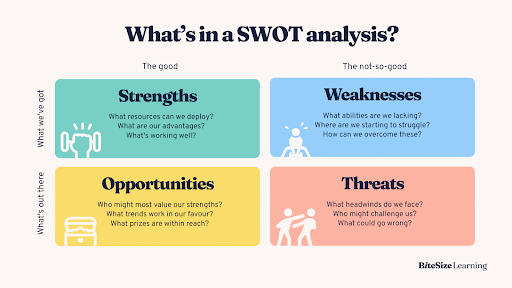Date Published:
Author: Ikhlas Patel

Business slowdowns can occur for various reasons, including seasonal fluctuations, evolving market trends, or indications that your current strategies may need an update. As a business owner or independent professional, experiencing ups and downs is inevitable; one month you may be inundated with projects, while the next, your inbox may be unusually quiet. Here are six strategies to maximize your downtime, keep your business moving forward, and maintain a positive mindset, recognizing that fluctuations are a natural part of the business journey.
1. Analyze the Situation
When your business experiences a slowdown, the first step is to conduct a thorough analysis. Start by examining your financial records to pinpoint when revenue began to decline. This will help you determine whether the slowdown is seasonal or indicative of a deeper issue. If it’s not seasonal, investigate market conditions, industry trends, and internal operations to identify any external factors or inefficiencies affecting your business performance.
Key Takeaway: Begin with a comprehensive analysis to identify the root causes of the slowdown by reviewing financial records, market conditions, and internal operations. This helps distinguish between temporary seasonal changes and more serious issues that need to be addressed.
2. Update Your Online Presence
Maintaining an updated online presence is crucial, especially during slow periods. Social media can significantly enhance your visibility. According to data from Meta, 83% of Instagram users discover new brands on the platform. Regularly posting on social media can increase brand awareness, drive traffic to your website, and promote content effectively. For instance, sharing links to your website in Instagram stories can provide easy access for potential customers.
In addition to social media, consider using Google Ads to reach targeted audiences. With Google Ads, you can select specific keywords, demographics, and interests to ensure your ads reach the right people. You only pay when someone interacts with your ad, and Google estimates an 800% return on investment (ROI). The Google Dashboard also allows you to track ad performance and make necessary adjustments.
Key Takeaways
Leverage Social Media for Brand Awareness: Regularly posting can significantly enhance visibility and drive traffic. With 83% of Instagram users discovering new brands, effective engagement can reach beyond your typical audience.
Utilize Google Ads for Targeted Marketing: This tool allows precise targeting based on various criteria, ensuring your ads reach the right audience while tracking performance effectively.

3. Develop New Products or Services
In a fluctuating business environment, continually seeking ways to adapt and diversify is essential. Consider expanding your product or service offerings. For example, if you own a bookstore, you might host storytime sessions for children or author events for signings. Alternatively, explore new markets by targeting different geographic regions or demographics.
Key Takeaway: Regularly posting can significantly enhance visibility and drive traffic. With 83% of Instagram users discovering new brands, effective engagement can reach beyond your typical audience.
4. Implement Promotions
Running promotions during slow periods can stimulate sales and attract new customers. Consider a variety of promotional strategies, such as:
Discounts and Incentives: Offer coupons or loyalty programs to encourage repeat business. Research indicates that 73% of people are more likely to engage with brands that provide promotional products.
Installment Payment Options: Providing payment flexibility can incentivize purchases.
Email Sign-Ups: Use promotions to encourage customers to sign up for email notifications about future offers.
Referral Programs: Encourage existing customers to refer friends and family in exchange for discounts or rewards.
Bundling Products or Services: Offer bundled deals to increase transaction values while providing perceived value to customers.
Social Media Giveaways: Host giveaways on social media to enhance engagement and grow your audience.
Key Takeaways: Targeted promotions during slow business periods are essential for boosting sales and expanding your customer base. Strategies such as discounts, referral programs, and social media contests can effectively drive customer engagement and loyalty.
5. Expand Your Network and Collaborate
Expanding your network and collaborating with other independent professionals can enhance your business opportunities. For example, if you’re a plumber, consider networking with contractors to generate more leads. Similarly, writers can team up with graphic designers to offer complementary services.
Key Takeaways: Collaborating with other professionals can enhance business opportunities by leveraging each other’s strengths and networks, leading to increased work and expanded service offerings.
6. Perform a Competitive Analysis
Slow business periods are ideal for conducting a competitive analysis to understand how your products compare to those of competitors. Use a SWOT (Strengths, Weaknesses, Opportunities, Threats) analysis to evaluate your position in the market. This exercise will help identify competitive advantages and areas for improvement.
Consider questions such as:
Are there gaps in your competitors’ offerings that you can fill?
How do their pricing strategies compare to yours?
How do customers perceive their brand relative to yours?
Key Takeaways: Utilizing slow periods for a competitive analysis, including a SWOT assessment, provides valuable insights into how your offerings measure up against competitors. This analysis can highlight areas for improvement and uncover opportunities to better meet customer needs.

Conclusion
When your sales decrease, consider these steps to navigate the slowdown effectively:
Analyze the Situation
Update Your Online Presence
Develop New Products or Services
Implement Promotions
Expand Your Network and Collaborate
Perform a Competitive Analysis
While experiencing a slowdown is challenging, it can also serve as an opportunity to refine your strategies and address potential weaknesses in your business model.

help@invisionmarketing.io
1 (425)-905-5730
Mon - Fri: 9:00 am to 5:00 pm
Sat-Sun: CLOSED
Service Areas